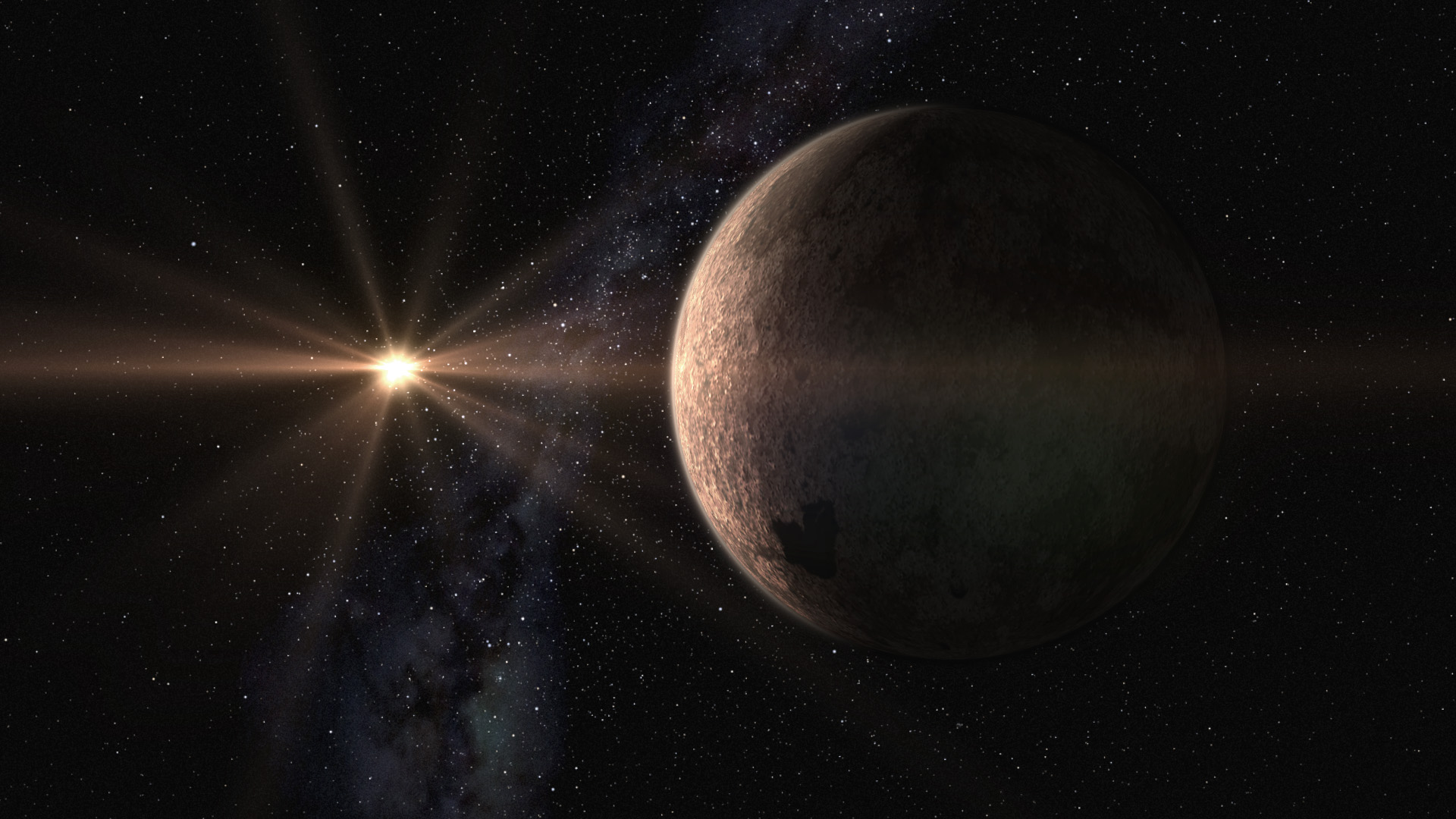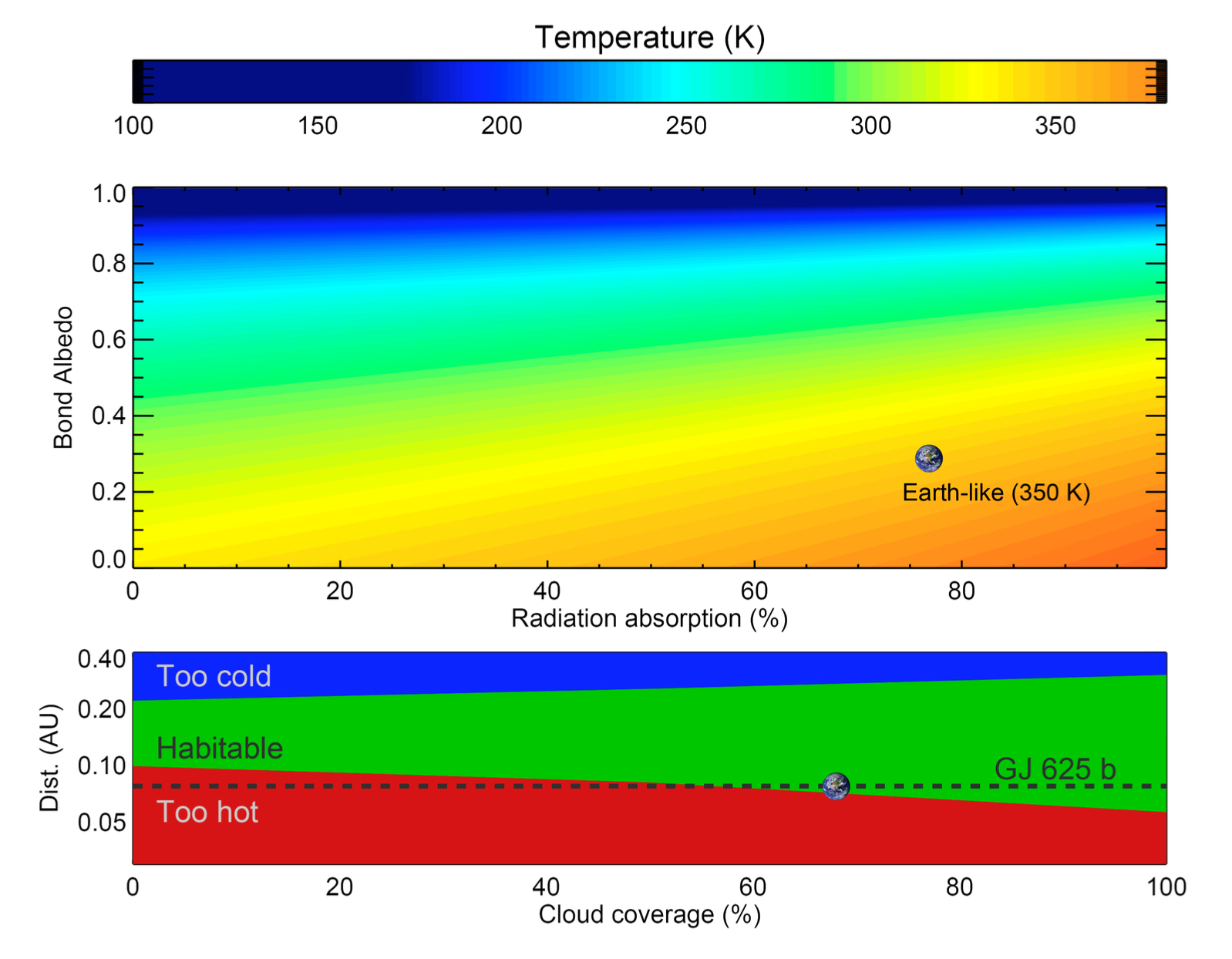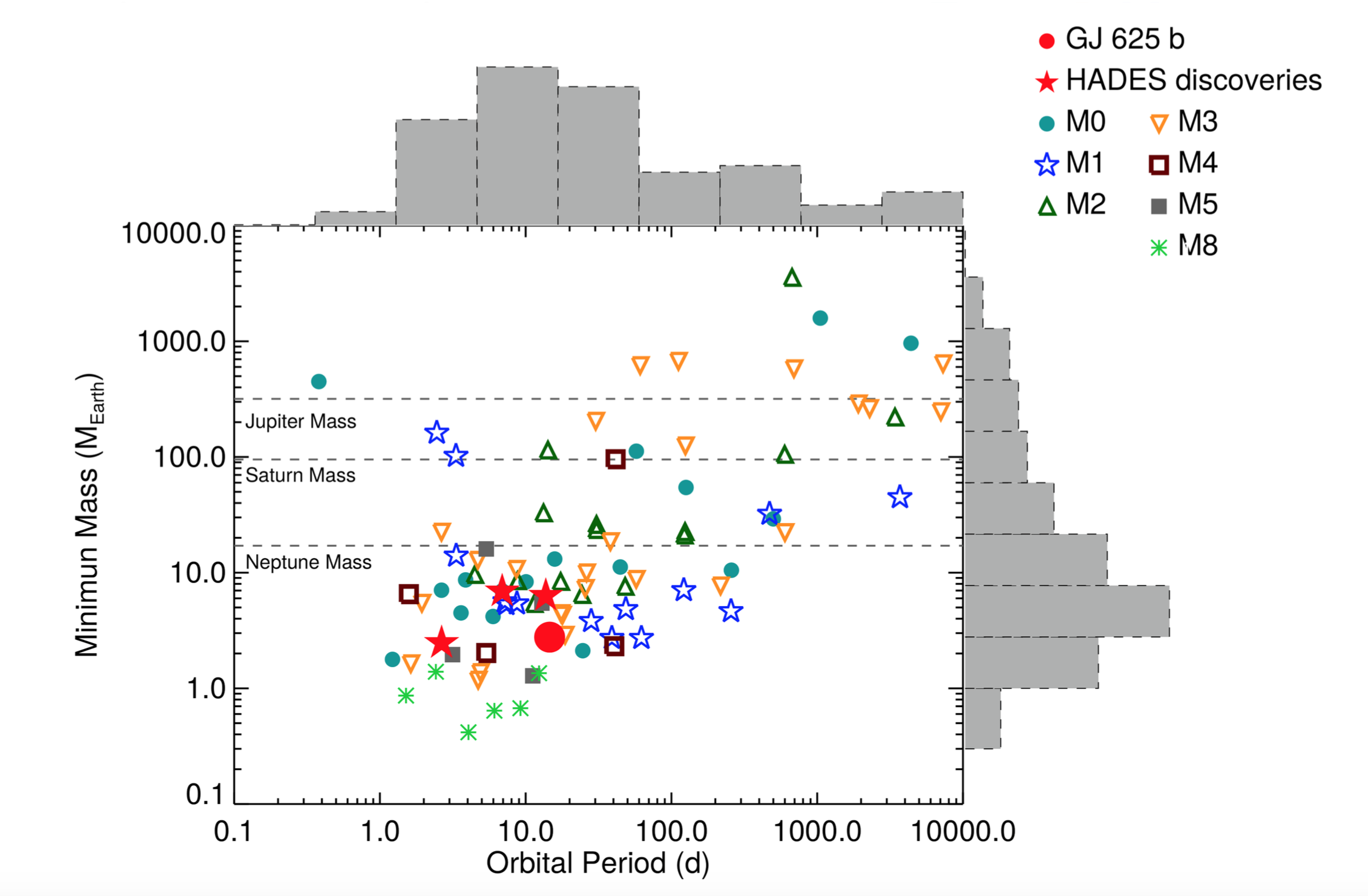A new Super-Earth discovered near the habitable zone of a cool star.
HADES has discovered a new rocky planet close to the limit of the habitable zone of a red dwarf with the radial velocity technique. To date only few tens of such planetary systems are known. Their discovery was made possible thanks to the spectrograph HARPS-N installed at the Telescopio Nazionale Galileo (TNG) at the Observatorio del Roque de los Muchachos (La Palma, Canary Islands)

Up to 25 years ago no planets were known outside our Solar System. Today we know about 3500 planets orbiting around stars which are not our Sun. There are many techniques to find them and the most common is the one based on the Radial Velocities. It consists in measuring the variation of position and velocity of a star hosting a planet caused by their motion around the common barycenter. Depending on the mass of the two components, the gravity acts in a different way on them and the perturbation induced by the planet on the star does produce a shift of the spectral features in the star's spectrum.

Thanks to this technique, a group of astronomers headed by Alejandro Suárez Mascareño (Geneva Observatory) who worked at the Instituto de Astrofísica de Canarias (IAC) on behalf of the HADES collaboration, has discovered a rocky planet with a mass comparable to the Earth and orbiting close to the habitable zone of a Red Dwarf star not far from the Sun.
The results of such a work have been illustrated in a paper accepted for publication on Astronomy & Astrophysics.
This new planet is interesting mainly because it is close to our Solar System. At just 21 light-years away from us and with a mass almost three times that of the Earth, this is one of the least massive Super-earth-like planets known to date, and it is located at the limit of the habitable zone of the red Dwarf star GJ625 (Gliese 625).
Despite this kind of stars are the most common in the Universe, only few hundreds of earth-like planets are known orbiting around them to date.
In most of the cases the exoplanets are found orbiting around very distant stars by using the Transit technique which consists in observing the small eclipse that the planet produces when it transits in front of the stellar disk. On the other hand only few tens of rocky planets have been discovered with the Radial Velocity technique around nearby stars and very few of them are in the habitable zone.

The HADES collaboration, that includes the Italian consortium GAPS and the Spanish EXOTEAM and tailored to search for rocky planets around Red Dwarfs with the HARPS-N spectrograph, has already lead to some discoveries.
This instrument, installed at the Telescopio Nazionale Galileo (TNG) at the Observatorio del Roque de los Muchachos (La Palma, Canary Islands), has monitored the Red Dwarf in the last three years to measure the small variations of radial velocity induced by the presence of the planet. Thanks to the 151 spectra obtained with HARPS-N a orbital period of 14 days of the planet has been calculated (in practice the planet need 14 days to orbit around its star).
Since GJ625 is a relatively cool star, explained Alejandro Suárez Mascareño, first author of this study, the planet would be at the border of the habitable zone, where liquid water could exist. Also, depending on the composition of its atmosphere and its rotation, it could be potentially habitable.
In the future, says Jonay González Hernández, new observational campaigns will be of fundamental importance to study the eventual transits of this planet around its star given its vicinity to the Sun.
“By observing the transit of the planet we could determine its radius and density and its atmosphere could be characterized by transmission studies with high-resolution and high-stability spectrographs installed at the GTC or telescopes like the 30m telescope (TMT), which completion is planned in the northern emisphere within the next ten years”, added Rafael Rebolo.
The identification of planets around M dwarf stars is actually one of the most important research fields. The project HADES is giving extremely interesting results in this field: “We already found one planetary system with two planets around the star GJ3998 and we have ten more good candidates to be confirmed in the next months”, concluded Giusi Micela.
Reference to the Paper: “HADES RV Programme with HARPS-N at TNG V. A super-Earth on the inner edge of the habitable zone of the nearby M-dwarf GJ 625”, A. Suárez Mascareño et.al.
TNG Contact: dydat@tng.iac.es

